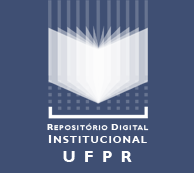Assessment of environmental, social and economic sustainability of a hydrographic basin in the Brazilian semiarid region
DOI:
https://doi.org/10.5380/dma.v61i0.78914Keywords:
aquatic ecosystems, water resources, eutrophication, Apodi-Mossoró RiverAbstract
The objective of the present study is to evaluate the environmental, social and economic sustainability of the Apodi/Mossoró River hydrographic basin (RN) located in the Brazilian semiarid region. The basin was divided into four sections: upper course, upper middle course, lower middle course, and lower course. The sampling sites were distributed along the hydrographic basin to obtain the values of the following limnological variables: dissolved oxygen, total nitrogen, total phosphorus and thermotolerant coliforms. Information related to economic and social indicators was acquired from the Brazilian Institute of Geography and Statistics (IBGE). Sustainability was assessed using the conceptual model implemented with the aid of the software Multisectorial, Integrated and Operational Decision Support System for Sustainable Use of Water Resources at the Catchment Scale (MULINO mDSS). In the Apodi/Mossoró river basin, the most sustainable stretch was the lower course, with less variation amplitude between the scores of the economic, environmental and social dimensions. This stretch was considered potentially sustainable, with better performance in the social and economic dimensions; however, comparatively, it showed lower score for the environmental dimension than the other sections of the hydrographic basin. This fact shows that the lower course section has greater economic and social development, however, presents more environmental problems. The upper course section was classified as having low sustainability. The upper middle course section stood out in the environmental dimension, but because it did not present proportional scores in the social and economic dimensions, its overall index was of low sustainability. The lower middle course section showed average sustainability. Thus, it was shown that environments that are more economically developed tend to have more environmental problems, however, they can still be considered more sustainable due to greater economic and social development.
Downloads
Published
How to Cite
Issue
Section
License
Copyright on works published in this journal rests with the author, with first publication rights for the journal. The content of published works is the sole responsibility of the authors. DMA is an open access journal and has adopted the Creative Commons Attribution 4.0 Not Adapted (CC-BY) license since January 2023. Therefore, when published by this journal, articles are free to share (copy and redistribute the material in any medium or format for any purpose, even commercial) and adapt (remix, transform, and create from the material for any purpose, even commercial). You must give appropriate credit, provide a link to the license and indicate if changes have been made.
The contents published by DMA from v. 53, 2020 to v. 60, 2022 are protected by the Creative Commons Attribution-NonCommercial-NoDerivatives 4.0 International license.
DMA has been an open access journal since its creation, however, from v.1 of 2000 to v. 52 of 2019, the journal did not adopt a Creative Commons license and therefore the type of license is not indicated on the first page of the articles.






